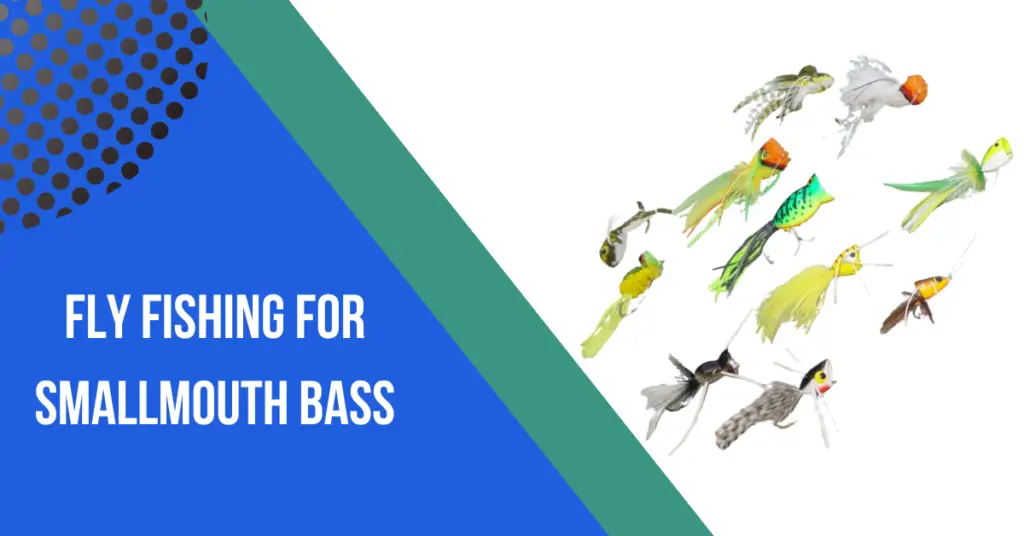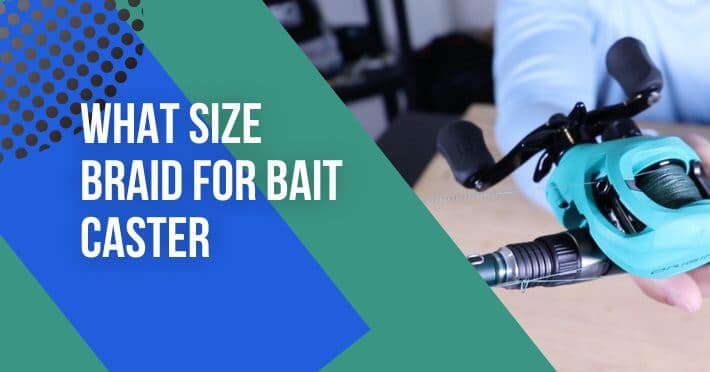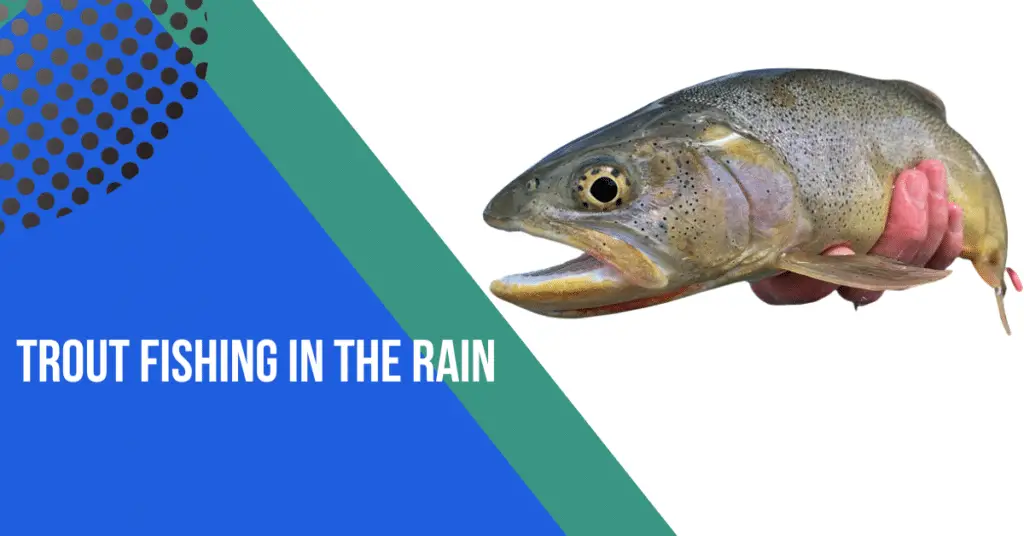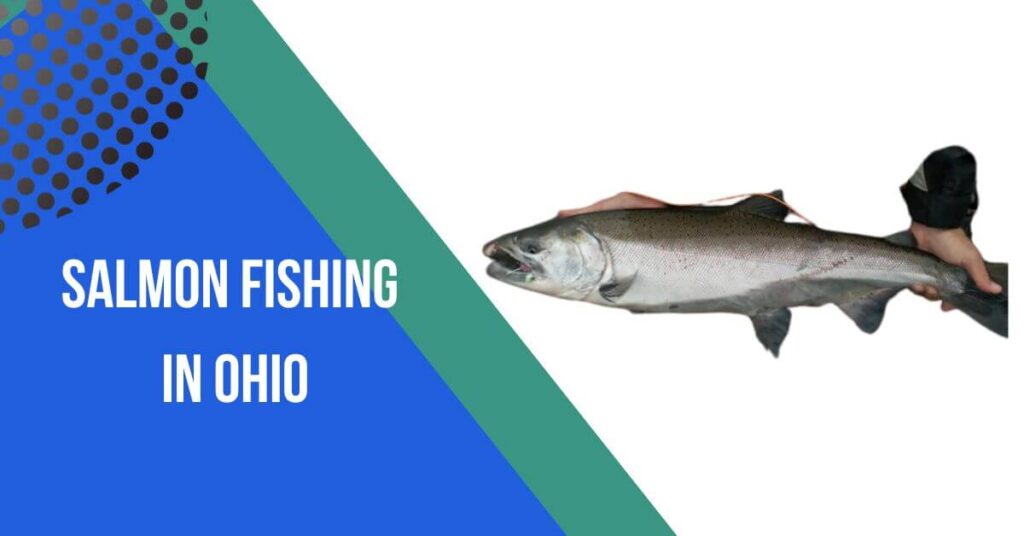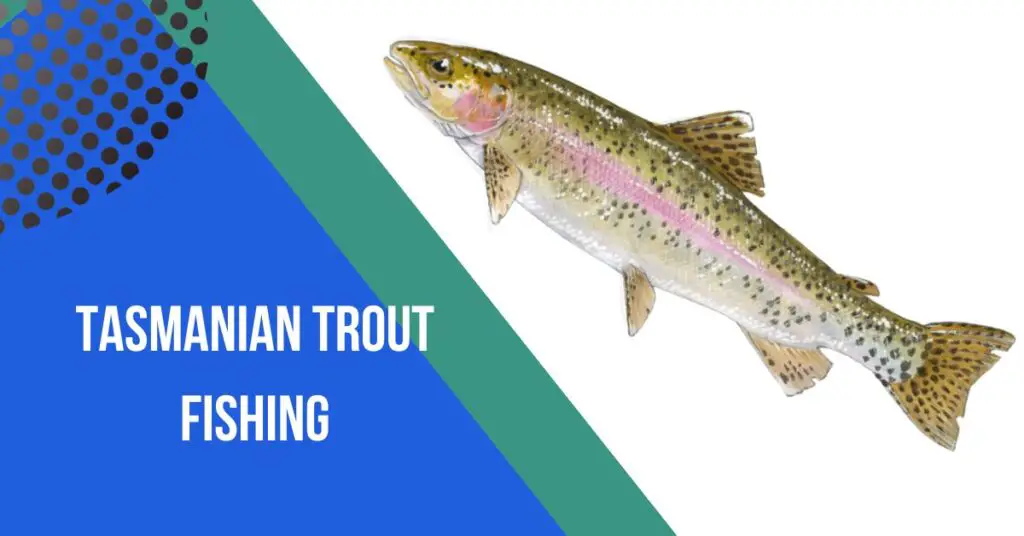Contents
- 1 Fly Fishing For Smallmouth Bass:
- 2 Characteristics of Smallmouth Bass:
- 3 Appeal of Fly Fishing for Smallmouth Bass
- 4 Challenges of Fly Fishing for Smallmouth Bass:
- 5 Fly Rods and Reels:
- 6 Fly Rods
- 7 Rod Weight:
- 8 Rod Length:
- 9 Action:
- 10 Fly Reels
- 11 Size and Capacity:
- 12 Drag System:
- 13 Arbor Size:
- 14 Weight:
- 15 Line and Backing
- 16 Floating Line:
- 17 Backing:
- 18 Additional Tips
- 19 Matching Reel Characteristics:
- 20 1. Weight and Balance:
- 21 2. Arbor Size:
- 22 3. Drag System:
- 23 4. Materials and Construction:
- 24 5. Line Capacity:
- 25 6. Retrieve Direction:
- 26 7. Porting and Design:
- 27 8. Brand Compatibility:
- 28 9. Maintenance and Cleaning:
- 29 10. Budget Considerations:
- 30 Conclusion:
- 31 FAQs:
- 32 Q1: What weight fly rod is best for smallmouth bass?
- 33 Q2: What are the best fly patterns for smallmouth bass?
- 34 Q3: Do I need a sinking line for smallmouth bass?
- 35 Q4: What’s the best time of day to fly fish for smallmouth bass?
- 36 Q5: How do I play and land smallmouth bass on a fly rod?
- 37 Q6: Can I fly fish for smallmouth bass in lakes?
- 38 Q7: What is the best reel for smallmouth bass fly fishing?
- 39 Q8: How should I approach smallmouth bass in rivers?
- 40 Q9: Is catch-and-release important when fly fishing for smallmouth bass?
- 41 Q10: What’s the best way to improve my fly casting for smallmouth bass?
Welcome to the exciting world of fly fishing for smallmouth bass! In this thrilling pursuit, anglers combine the artistry of fly casting with the thrill of targeting one of the most aggressive and hard-fighting freshwater species. Smallmouth bass, known for their acrobatic leaps and powerful runs, offers a rewarding challenge for fly fishermen.
As you venture into this realm, mastering the basics of fly casting becomes essential. The delicate presentation of a fly mimicking natural prey is key to enticing smallmouth bass. Targeting these feisty fish in rivers and streams adds an extra dimension, requiring strategic positioning and knowledge of their habitat.
Equip yourself with suitable fly patterns, imitating the insects and baitfish that make up the smallmouth’s diet. From poppers to streamers, the fly box should be diverse to match the varied preferences of these adaptable predators.
Prepare for heart-pounding strikes and exhilarating battles as you delve into the immersive world of fly fishing for smallmouth bass. This journey promises not just a catch but an experience that connects you with nature and the thrill of angling.
Fly Fishing For Smallmouth Bass:
Fly fishing for smallmouth bass is a thrilling and immersive angling experience that combines the elegance of fly casting with the excitement of pursuing one of North America’s most feisty freshwater species. Smallmouth bass (Micropterus dolomieu) are renowned for their aggressive strikes, powerful fights, and acrobatic displays, making them a favorite target among fly anglers.
Characteristics of Smallmouth Bass:
- Aggressive Nature: Smallmouth bass are known for their predatory behavior, eagerly striking at a variety of prey items. Their aggressive nature makes them a challenging and rewarding catch for fly fishermen.
- Habitat Preference: Smallmouth bass are often found in clear, cool waters of rivers, streams, and lakes. They prefer rocky structures, submerged logs, and another cover that provides ambush points for hunting.
- Versatility: Smallmouth bass can adapt to various environments, making them accessible to fly anglers in both flowing and still waters. Their adaptability opens up diverse fishing opportunities.
Appeal of Fly Fishing for Smallmouth Bass
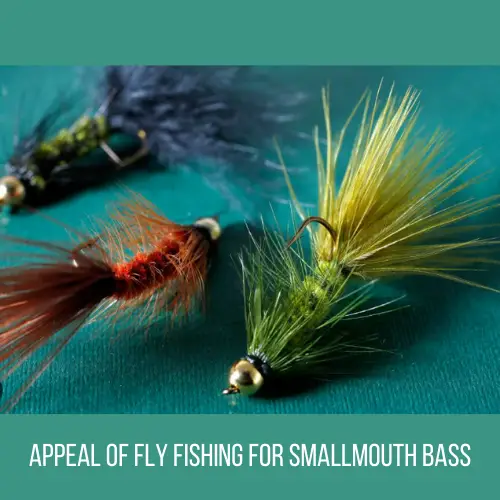
- Artistry of Fly Casting: Fly fishing is characterized by its unique casting techniques, allowing anglers to delicately present artificial flies that mimic natural prey. This artistry adds an extra layer of skill and enjoyment to the fishing experience.
- Close-to-Nature Experience: Fly fishing often involves wading in rivers or quietly floating in a boat, bringing anglers closer to the natural surroundings. The immersive nature of this pursuit enhances the overall fishing adventure.
- Exciting Fights: Smallmouth bass are known for their powerful runs and acrobatic leaps when hooked. The fight they put up on fly tackle adds an adrenaline-pumping element to the angling experience.
Challenges of Fly Fishing for Smallmouth Bass:
- Precision Casting: Successfully presenting a fly to smallmouth bass requires precise casting skills. Anglers need to develop accuracy and finesse to entice these wary fish.
- Understanding Fly Selection: Matching the hatch and selecting the right fly pattern is crucial in fooling smallmouth bass. Knowledge of their feeding habits and preferred prey enhances the angler’s chances of success.
- Adaptability: Smallmouth bass can be found in a variety of environments, and successful fly fishermen must adapt their strategies to different conditions, whether fishing in rivers, streams, or lakes.
In summary, fly fishing for smallmouth bass offers a unique blend of skill, strategy, and excitement. Anglers can enjoy the challenge of casting meticulously tied flies to entice these spirited fish, making each outing a memorable adventure in the pursuit of smallmouth bass.
Fly Rods and Reels:
Selecting the right fly rod and reel is crucial for an enjoyable and successful smallmouth bass fly fishing experience.
Here’s an overview of the key considerations:
Fly Rods
Rod Weight:
For smallmouth bass, a 6 to 8-weight rod is generally recommended.
Lighter rods (6 or 7-weight) are suitable for smaller rivers and streams, while heavier rods (8-weight) are better for larger rivers or lakes.
Rod Length:
A versatile length for smallmouth bass is around 9 feet. This provides a good balance of casting distance and accuracy.
Shorter rods (8.5 feet) can be useful for tighter spaces, while longer rods (9.5 feet) may offer advantages in mending lines on moving water.
Action:
A fast to medium-fast action rod is preferred for smallmouth bass. This helps with long casts and provides the power needed for accurate presentations and fighting strong fish.
Fly Reels
Size and Capacity:
Choose a reel with enough capacity for the fly line and backing appropriate for the rod weight.
Smallmouth bass can make powerful runs, so a reel with a smooth drag system is essential. Consider an anodized aluminum reel for durability.
Drag System:
A strong and smooth drag system is crucial. Smallmouth bass can be powerful fighters, and a reliable drag helps control their runs.
Disc drags are common and provide consistent and adjustable resistance.
Arbor Size:
Opt for a large arbor reel. A larger arbor retrieves line more quickly, which can be advantageous when bringing in a fast-swimming smallmouth bass.
Weight:
Balance is key. Choose a reel that complements the weight and feel of your fly rod without making it too heavy or too light.
Line and Backing
Floating Line:
For surface presentations, use a weight-forward floating line. This is ideal for poppers and surface flies.
Consider a weight-forward intermediate line for fishing subsurface flies just below the surface.
Backing:
Use a sturdy backing to handle the strong runs of smallmouth bass. A 20 to 30-pound Dacron or braided backing is common.
Additional Tips
Combo Sets: If you’re new to fly fishing, consider purchasing a rod and reel combo set. These sets are often pre-matched for optimal performance.
Budget Considerations: Quality gear is important, but there are options at various price points. Look for a balance between performance and your budget.
Try Before You Buy: If possible, cast different rods before purchasing to find a weight and action that feels comfortable for your casting style.
Remember that personal preference plays a role in rod and reel selection, and the best setup for you will depend on factors like the specific waters you’ll be fishing and your preferred casting style.
Matching Reel Characteristics:
Choosing the right fly reel is crucial for an effective and enjoyable smallmouth bass fly fishing experience. Here are some key characteristics to consider when matching a reel with your fly rod:
1. Weight and Balance:
- The reel should complement the weight of your fly rod to maintain a balanced setup. A well-balanced outfit ensures a comfortable and efficient casting experience.
- If the reel is too heavy, it can make the rod tip-heavy, affecting your casting accuracy and causing fatigue during extended fishing sessions.
2. Arbor Size:
- Opt for a reel with a large arbor. A large arbor retrieves line more quickly, which can be advantageous when bringing in a fast-swimming smallmouth bass.
- Large arbor reels also reduce line memory, allowing for smoother and more efficient casts.
3. Drag System:
- A strong and smooth drag system is essential for handling the powerful runs of smallmouth bass. Look for a reel with a reliable drag that provides consistent resistance.
- Disc drag systems are commonly used and offer the strength and adjustability needed for battling strong fish.
4. Materials and Construction:
- Choose a reel made from durable materials, such as machined aluminum or high-quality composite materials.
- Anodized finishes enhance the reel’s corrosion resistance, ensuring longevity, especially in freshwater environments.
5. Line Capacity:
- Ensure that the reel has enough capacity to accommodate the fly line and backing appropriate for the rod weight.
- Smallmouth bass are known for powerful runs, and having sufficient backing is crucial to prevent running out of line during a fight.
6. Retrieve Direction:
- Consider the retrieve direction of the reel (left-hand or right-hand retrieve) based on your personal preference. Most reels offer the option to change the retrieval direction.
7. Porting and Design:
- Porting or cutouts in the reel design can help reduce weight without sacrificing strength. However, ensure that the reel remains structurally sound.
- Choose a design that minimizes the risk of line snagging or trapping, especially when dealing with fast and aggressive fish.
8. Brand Compatibility:
- While not mandatory, choosing a reel from the same brand as your fly rod can ensure better compatibility and aesthetics. However, this is a matter of personal preference.
9. Maintenance and Cleaning:
- Consider the ease of maintenance. Look for a reel that can be easily disassembled for cleaning and lubrication to ensure smooth performance over time.
10. Budget Considerations:
- Reels come in a wide range of price points. Consider your budget and find a reel that offers the necessary features without exceeding your financial constraints.
Matching the characteristics of your fly reel with your rod is essential for creating a balanced and efficient setup. It’s worth spending time researching and testing different reels to find the one that meets your specific needs and preferences.
Conclusion:
In conclusion, fly fishing for smallmouth bass is a captivating pursuit that combines the elegance of fly casting with the thrill of pursuing an aggressive and powerful freshwater species.
From selecting the right gear, mastering casting techniques, and understanding the habits of smallmouth bass, each aspect adds to the adventure.
As you explore diverse waters, adapt your strategies, and experience the exhilarating fights these fish provide, remember the importance of conservation and ethical angling practices.
Savor the moments, and let each cast be a connection to the dynamic world of smallmouth bass fly fishing. Happy angling!
FAQs:
Q1: What weight fly rod is best for smallmouth bass?
A1: A 6 to 8-weight fly rod is generally recommended for smallmouth bass. Lighter weights (6 or 7) are suitable for smaller rivers, while heavier weights (8) are better for larger rivers or lakes.
Q2: What are the best fly patterns for smallmouth bass?
A2: Effective fly patterns include poppers for surface action, streamers to mimic baitfish, and nymphs or crayfish imitations. Choose patterns based on the prevalent prey in the specific water you’re fishing.
Q3: Do I need a sinking line for smallmouth bass?
A3: While a floating line is commonly used, a sinking line can be beneficial for fishing deeper waters or reaching fish holding in the lower part of the water column.
Q4: What’s the best time of day to fly fish for smallmouth bass?
A4: Smallmouth bass are often more active in low-light conditions, so early morning and late evening can be productive. However, they can be caught throughout the day, especially in cooler temperatures.
Q5: How do I play and land smallmouth bass on a fly rod?
A5: Use a balanced tackle setup, keep consistent pressure on the fish, and be prepared for their powerful runs and jumps. Tire the fish gradually, and use a landing net to ensure a safe and effective release.
Q6: Can I fly fish for smallmouth bass in lakes?
A6: Yes, smallmouth bass can be found in lakes. Adjust your tactics, such as using sinking lines to target deeper water structures where bass may be holding.
Q7: What is the best reel for smallmouth bass fly fishing?
A7: Look for a reel with a large arbor, a smooth drag system, and sufficient line capacity. Choose materials like machined aluminum for durability.
Q8: How should I approach smallmouth bass in rivers?
A8: Focus on structure and cover, as smallmouth bass often hide around rocks, submerged logs, and other features. Work your fly close to these areas for the best chance of success.
Q9: Is catch-and-release important when fly fishing for smallmouth bass?
A9: Yes, practicing catch-and-release helps conserve fish populations. Handle fish with care, use barbless hooks, and release them quickly to ensure their survival.
Q10: What’s the best way to improve my fly casting for smallmouth bass?
A10: Practice regularly, work on your accuracy, and experiment with different casting techniques. Consider taking lessons or watching instructional videos to refine your skills.

